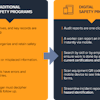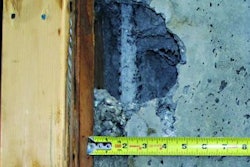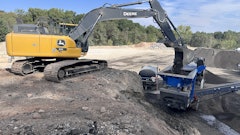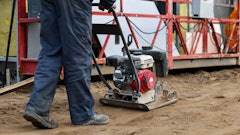President Barack Obama on Monday will unveil a $3.8 trillion budget proposal that includes the first installment of $53 billion in spending on high-speed rail projects over six years. Republicans have already issued a version of the budget that would eliminate all rail subsidies --- making it one of the first flash points in a battle over federal spending that will pit the Democratic White House against the new GOP leadership in the House. The future of high-speed rail in Georgia could rest in the balance.
Billions for rail
Obama is expected to propose an initial allocation of $8 billion for high-speed rail this budget year, picking up from last year, when his administration handed out $10.5 billion in stimulus and other funds to get rail projects going across the country. Grants included:
- $2.9 billion for a line connecting San Diego to San Francisco
- $2 billion for an Orlando-Tampa line. $1.1 billion for a Chicago-St. Louis-Kansas City route
- $800 million for a Madison-Milwaukee-Chicago line
- $545 million to North Carolina for a Raleigh-to-Charlotte line
- $400 million for a Cincinnati-Columbus-Cleveland corridor.
Georgia, which had lagged in planning, later in the year received a $4.1 million joint grant with North and South Carolina to begin planning a Charlotte-Atlanta connection --- a crucial part of any Southeast high-speed rail corridor.
Any new funding would likely go to getting the most advanced projects under construction.
Saying 'no thanks'
Even before the budget battle in Congress begins, the rail plan has become a point of contention, with two states that were among the big winners last year --- Ohio and Wisconsin --- withdrawing from the effort.
Both states in November threw out Democratic governors and legislative majorities that supported heavy investments in high-speed rail, electing in their place Republicans who rejected the projects as too expensive to build and maintain.
Their combined $1.2 billion share of the funds is being redistributed. Roughly half will go to California, a quarter to Florida and the remainder to 12 other states. Among them is Illinois, prompting Wisconsin Democrats to erect a snarky billboard on the highway between Milwaukee and Madison, the capital, addressed to the state's new governor: "Dear Scott Walker, Thanks for the money & jobs! Love, Illinois."
Walker had charged on the campaign trail that the project was a "boondoggle" that would create 55 jobs --- not the more than 9,000 estimated by supporters --- at a cost he calculated to be $14.5 million apiece.
Subject of disagreement
The bitter jibes and wildly divergent claims may be just beginning. That's because the high-speed rail issue in many ways encapsulates the philosophical divide between the two parties over federal spending --- one that will spill over into many other areas of the budget debate as a new Republican majority asserts itself the House of Representatives.
Democrats' view: As Obama and his supporters see it, investing in high-speed rail helps the aging U.S. transportation system catch up to those of other developed nations and creates jobs to speed up the still-halting economic recovery.
"If we don't get a grip, folks, they'll not only be teaching us, they're gonna own our kids," warned Vice President Joe Biden as he announced the proposal.
The problem is, the lead time for such a vast project is lengthy, and --- as with other infrastructure stimulus spending --- much of it turns out to be far from "shovel-ready." That means the jobs generated may not materialize in time to have a significant effect on the current unemployment crisis.
There is also an ongoing debate over whether car-happy Americans will use high-speed rail, especially when it takes them to destinations where the local transit connections they would need to reach their specific destinations are limited.
Republican position: Republicans believe there is an urgent need to lower the burgeoning national debt. Obama's budget plan carries a $1.3 trillion deficit --- down from $1.56 trillion this year, but nowhere near the level the GOP would like to see. It says discretionary spending on projects like high-speed rail will need to be put on hold or canceled if the country is to avert a future financial crisis.
Polling shows many Americans share that anxiety, with a majority opposed to new spending on transportation, among other areas.
Economists are just as worried that if federal spending slows too abruptly, the recovery will sputter. The U.S. is decades behind Europe and Asia in developing efficient passenger rail systems that proponents say would lower petroleum dependency and reduce traffic --- though whether there are more cost-effective methods, such as express buses and improved traffic controls, is still being debated.
First test
Whether or not Congress approves this round of funding, a test of rail's popularity could come as early as 2015, the anticipated completion date of the already largely funded Orlando-to-Tampa line. It would be the first high-speed U.S. rail line outside the busy Northeast corridor served by Amtrak's profitable Acela Express.
However, that goal was set during the administration of Gov. Charlie Crist, who was replaced in January by Rick Scott, a tea party-backed Republican who has expressed skepticism about the system.
Though the federal government has already committed to providing most of the money for the $2.5 billion project, Scott wants the private sector, rather than the state, to kick in Florida's share. Even then, he has said he is unconvinced the state can afford to operate the line, and he is concerned about the potential for Florida getting stuck paying for any cost overruns.
His unwillingness so far to commit to the project raises the prospect that he may follow the lead of Ohio and Wisconsin, returning the already allocated federal funds.
Georgia's role
If Florida gives up its high-speed rail funding, other states will line up to receive a share. One of them could be Georgia.
New Gov. Nathan Deal, as a veteran former congressman, hasn't committed to the idea of high-speed rail. But unlike some other new Republican governors, he hasn't opposed it, either. (What effect questions about Georgia House Speaker David Ralston's $17,000 trip to Europe on rail lobbyists' tab will have is unclear.)
Speaking last September as he campaigned, Deal said building and operating a passenger rail system would be expensive, "But that doesn't mean you shouldn't be working toward it."
Also last fall, his former GOP colleague in Washington, congressman-turned-Transportation Secretary Ray LaHood, said the door would be open for Georgia to participate in regional high-speed rail planning, which calls for Atlanta to serve as a key connection.
"They should be," LaHood said. "They're an important region of the country."
First, though, will come the bigger battle over whether high-speed rail will --- and should --- be a part of the federal spending blueprint. House Transportation Committee Chairman John Mica, R-Fla., has said any federal investment should be limited to Amtrak's Northeast corridor and that projects undertaken elsewhere should be left to the private sector.
"This is like giving Bernie Madoff another chance at handling your investment portfolio," Mica said last week, dismissing the administration's plan.
The administration's argument: Only the federal government is big enough to get a project of nationwide scope under way.
Sources: Washington Post, White House, Federal Railroad Administration, National Journal, Associated Press, POLITICO
An outline of the details
What it is
Vice President Joe Biden, announcing the administration's funding plan for high-speed rail, divided rail plans into three categories:
Core express. Corridors where high-speed electric trains on dedicated tracks would travel at speeds exceeding 125 mph. Amtrak's Acela line, connecting Washington with Boston through Baltimore, Philadelphia and New York, operates at up to 150 mph in places, although it averages less than half that on its shared tracks. Amtrak is planning to spend billions of dollars over the next decade to increase speeds on the profitable line, cutting travel time between Washington and New York to 96 minutes from 162 minutes.
Regional. Intercity lines where trains will travel up to 125 mph. These routes would be slated for future high-speed service.
Emerging. Corridors where trains traveling up to 90 mph would funnel passengers to higher-speed networks.
Where it would be
The Federal Railroad Administration has identified 11 high-speed rail corridors:
Northeast. The existing Washington-to-Boston line traveled by Amtrak's high-speed Acela train.
Southeast. Atlanta would be part of this line, linking to the Gulf corridor, as well.
Chicago Hub. This was to include the Wisconsin and trans-Ohio routes for which the states have rejected funding.
Florida. The Orlando-to-Tampa line is part of this route, which would eventually extend to Miami.
Keystone. A line across Pennsylvania, which already has a 100 mph-plus passenger service between Philadelphia and Harrisburg.
Northern New England. Preliminary work has begun in Maine.
Also: Gulf Coast, California, South Central, Empire and Pacific Northwest.
The timeframe
The Obama administration's proposal calls for giving 80 percent of Americans access to high-speed rail within 25 years.
What it would cost
The $53 billion, six-year administration plan covers the core sections of the major corridors.
Acela's fares may provide a glimpse of what it would cost to ride. For a trip this Wednesday from Washington to Manhattan, quoted fares last week ranged from $76 to $183, depending on the time of departure. The shortest trip was two hours, 42 minutes.
Alternatives
High-speed rail opponents offer ideas that include:
Adapting highways for high-speed, driverless cars in special express lanes.
Portal-to-portal bus service. Computer-coordinated intercity buses would pick up passengers at their homes or workplaces and deliver them directly to their chosen destinations.
Focusing on maintenance and upgrades to the current interstate highway system and leaving the development of alternatives entirely to the private sector.
High stakes for high-speed rail
A brewing budget battle in Washington is likely to determine the fate of plans calling for construction of 11 major high-speed rail corridors. Atlanta would occupy a key position linking the Southeast and Gulf Coast corridors.
Note: The rail line from Anaheim, Calif., to Las Vegas is not part of the 11 officially designated high-speed corridors.
Sources: U.S. Department of Transportation, California-Nevada Interstate Maglev Project, Associated Press


















